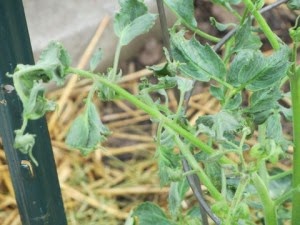Drinking Water and Garden Irrigation During Drought or Crisis
by Lizzie Bennett
California is suffering drought conditions and the weather forecast indicates that this may continue for some time. It’s the worst drought in 40 years, and farmers are already warning of shrivelled crops and food price rises. With some reservoirs at only 20% of their usual capacity farmers such as Paul Van Leer are not optimistic:
“I have never seen it this bad. Everyone is feeling it. We’re looking out of the window wondering when it is going to come. We’re in the heart of a rainy season right now, and if we don’t get it in the 30 to 45 day window, we’re pretty much done,” he said in an interview with Sky News US.
As all well know it’s not only drought that can affect our water supply. Any interruption of power, or any form of breakdown is liable to have an effect on our water supply within a couple of days.
Widget not in any sidebars
There might not be much large-scale farmers can do about either drought or collapse, but on an individual level there’s still time to insulate yourself from the water shortages and price rises regardless of their cause.
Most water used to irrigate crops, be it on a farm scale or in your own back yard is lost to evaporation. Custom made systems are costly but a home made solution need not be.
Underground irrigation made simple
This can now be buried a few inches under the soil so that the water that seeps out of it goes right to the roots and avoids loss by evaporation.
The end that would normally go on the tap can still do so if you wish but you may find that using grey water from washing up etc. is more prudent either during drought or some other crisis that means water is in short supply. A funnel in the end of the hose, which should be fixed at least four feet off the ground, helps get water into the system with the minimum of waste. Make sure you strain the water first.
To catch your grey water in the first place disconnect the waste pipe under the sink and put a container underneath.
For a high tech filter solution…stuff a sponge up the pipe to filter food waste.
 Of course we may have to face the fact that we don’t actually have grey water, that washing up is a luxury that we can no longer afford. Although the water for drinking will be our top priority maintaining our veggie patches is also essential.
Of course we may have to face the fact that we don’t actually have grey water, that washing up is a luxury that we can no longer afford. Although the water for drinking will be our top priority maintaining our veggie patches is also essential.
Make sure there is plenty of moisture-retaining mulch on top of the soil to minimize evaporation further still, and an A frame at each end of the plot can be draped with clear plastic just before sundown. Condensation will collect on the inside of the plastic and roll down giving your veggies a small but vital drink.
A solar still can produce water both for drinking and washing and for maintaining a small veg patch.
Homemade solar still
Cut the bottom off the biggest soda bottle or similar item that you can find and place over the small container. Condensation will collect on the inside of the bottle and run down, collecting in the larger container. You can make as many of these as you have space for and although you may not have enough water to enjoy a bubble bath you will collect enough to stave off dehydration.
Ever walked through grass in the early morning and cursed when your jeans are soaking? Dew is a valuable water source. Throwing down a microfibre towel onto dew covered grass will allow you to absorb enough for a sponge bath. Unlike regular towels microfibre soaks up many times its own weight in water. They are very light and roll into really small, ideal for multiple uses they should be in every survival kit.
Contributed by Lizzie Bennett of Underground Medic. Lizzie Bennett retired from her job as a senior operating department practitioner in the UK earlier this year. Her field was trauma and accident and emergency and she has served on major catastrophe teams around the UK. Lizzie publishes Underground Medic on the topic of preparedness.




